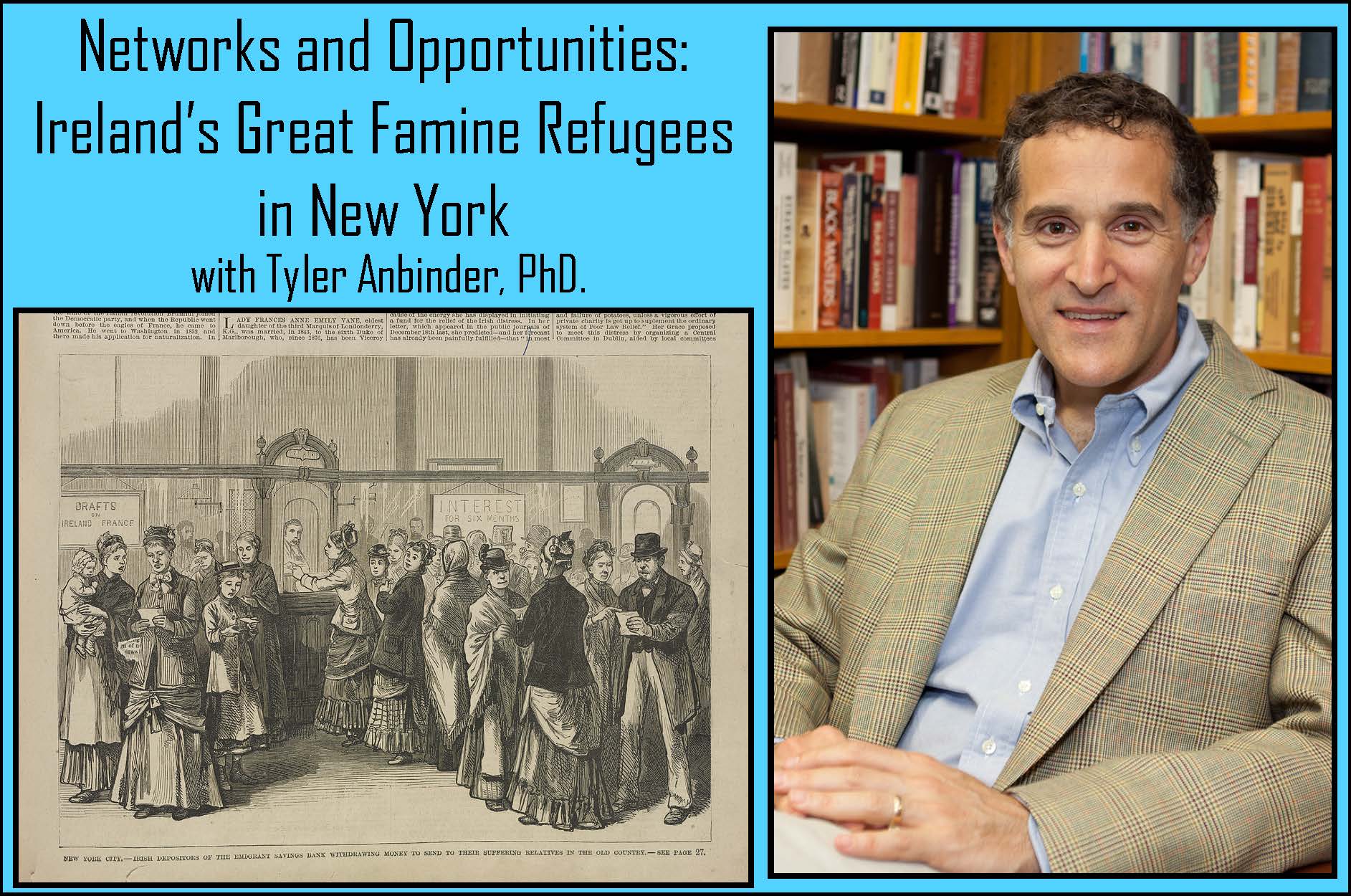When the Irish were fleeing famine and suffering in Ireland for the United States, The Sun called them “the most miserable looking creatures that we have ever seen landed upon our shores.”
Tyler Anbinder, PhD. dispels the myth of their poverty and shows that Irish immigrants utilized networks to help them survive and ultimately thrive in their unfamiliar new hometown. The Emigrant Savings Bank’s ledger books contain extraordinary detail about the precise birthplace, emigration experience, residence, and employment history of tens of thousands of Irish immigrants, which enabled Anbinder to learn much more about their customers in the 19th Century and shed light on the fate of the Irish escaping famine.
What differentiated those who saved more than the median from those who saved less? What differentiated the unskilled workers from County Cork, who saved very little, from the unskilled
workers from neighboring County Kerry, who saved much more? What separated Irish immigrants who flourished financially from those who did not? Despite the historio-graphic consensus that most unskilled Famine immigrants were doomed to lives of poverty in the United States, many accumulated significant savings.
Tyler Anbinder, PhD. is a specialist in nineteenth-century American politics and the history of immigration and ethnicity in American life and is a professor at Columbian College of Arts & Sciences at George Washington University.
This is the fourth lecture in our new Great Hunger series to commemorate the 175th Anniversary of Black '47.
